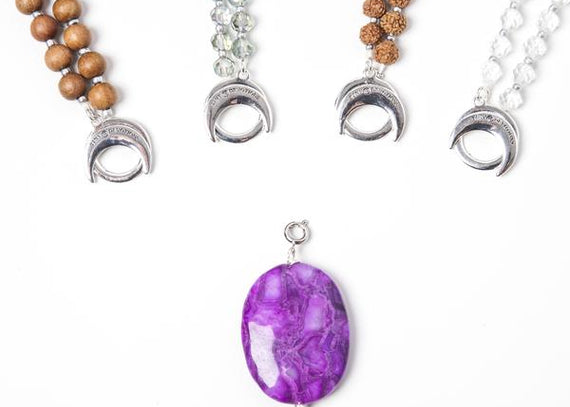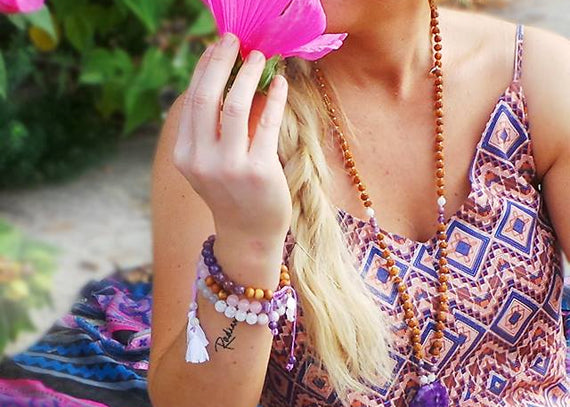We’ve all seen them- small beads with various colors and textures wrapped around the wrists or draped along the neck of yoga practitioners, sometimes with a tassel, other times without. These beads are known as malas, but what exactly are they? A yoga accessory? A fashion statement? A fleeting trend? The truth is mala beads may seem trendy in yoga communities, but these seemingly simple beads hold ancient history and tradition ultimately focused on connection. To understand them, we need to start at the beginning- the roots.
What Exactly is a Mala?
A mala (meaning “garland”) is simply a string of prayer beads. It is used as a tool to help guide a person in meditation, recitation of a mantra or to pray.
The Roots of Mala: Beads
To explore the roots of malas, we will start with what makes them: beads! Beads have been a part of human culture for at least 70,000, evidenced by artifacts found in in Northern Africa. Now while we have no indication that these were used in the same way as mala beads, it is interesting to see the long history of beads in the human lineage as decoration and cultural significance. The literal roots of malas can be found in the material they are made from, including sandalwood and or rudraksha seed and traditionally strung together with silk or cotton.
Malas Across Culture
Malas takes on many forms and across cultures. In Buddhist traditions they are known “Budhhist Prayer beads”, and in Hinduism, Jainism and Sikhism, known as japamala in which practitioners engage in japa, Sanskrit for “repetition of a divine mantra or name”. In Christianity, prayer beads are often called rosaries, and in Islam known as Misbaha. Although the beads vary across religions, all variations are meant to help draw your focus inward as you pray or meditate, helping to count your prayers or mantras as you move from bead to bead.
Malas in Yoga
In yoga, malas are used for meditation and sometimes a bit of a fashion statement. The tradition of using malas for concentration continues as they are most used in meditation while reciting a mantra or simply bringing your focus back to the present moment. People may wear their mala to help them enter a meditative state, to connect them with a wider devotion, or simply as a reminder to stay grounded.
Regardless of your beliefs it is now common to customize malas to suit your needs by creating bespoke malas with specific gemstones and materials that embody certain qualities.
Malas continue to be a valuable traditional tool to deepen your meditation practice while also representing the individuality of a person. To find a mala that may be right for you, start exploring and reflecting on your devotion and see which mala resonates with you and your practice. A great selection to get you started can be found here.
Do you use a mala? How does it influence your practice?
 Laura is an anthropologist specializing in primatology and 500-hour yoga instructor. She currently loves in Cambridge, England, where she teaches yoga and runs her own blog called AnthroYoga (www.anthroyoga.com). She loves exploring yoga in and outside of class.
Laura is an anthropologist specializing in primatology and 500-hour yoga instructor. She currently loves in Cambridge, England, where she teaches yoga and runs her own blog called AnthroYoga (www.anthroyoga.com). She loves exploring yoga in and outside of class.
The post What’s Up with Mala Beads? appeared first on Tiny Devotions.




